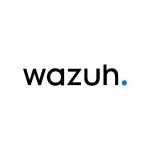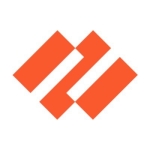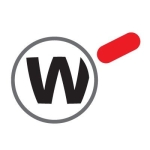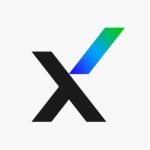The dashboard is the heart of Trend Vision One for me. What I particularly appreciate is the flexibility: each colleague can create their own dashboard, and I still maintain an overview of the big picture. This granular way of working while maintaining a holistic view motivates me to engage with the tool.
The cloud-based architecture offers considerable advantages over local, individual solutions. Previously, I had to manage patching across various Trend Micro systems manually - now, that’s centrally handled. However, I need to be cautious that updates aren't rolled out too quickly, which could impact notebooks or servers.
The global overview has definitely helped me a lot. The only drawback is the usual subscription model - unfortunately, prices tend to move upward.
Since I've been working with Trend Micro for over 20 years, we’ve been able to consolidate our security landscape and source everything from one vendor, rather than juggling multiple providers.
Trend Vision One gives us better visibility to detect and respond to threats because we can now see more than ever before. We've always made every effort to receive notifications quickly so we could act immediately. Now, I have a much clearer, centralized platform where I can manage all incidents in a structured way.
Interestingly, Trend Vision One shows us more error messages than before, not because more problems are occurring, but because I can now see them for the first time and address them systematically.
Trend Vision One helps us reduce our overall cyber risk. I've always had good experiences with Trend Micro. It gives me the confidence to recognize well-protected areas and uncover vulnerabilities that need attention. Even though I've achieved a good security level, I can't afford to relax. For security audits, the solution helps us demonstrate compliance with certain standards.
Regarding AI integration, I can't make a final judgment yet. AI has both advantages and disadvantages, and attackers are increasingly using it too. However, I believe that AI will become indispensable in security platforms.
The initial setup has a certain complexity that varies by area. Some areas are relatively easy to configure; others definitely require expertise and practice. Without professional support, the start would have been difficult.
We had two German partners on board for several weeks and months. In short, intensive sessions of two to four hours, they developed a structured onboarding process with us. After about three two-hour sessions, we could work independently with the product.
Our implementation strategy for Trend Vision One was three-tiered: First, we migrated from our on-premise Apex One solution to Trend Vision One in the cloud. In the second step, we migrated the servers, and finally we checked all sensors.
We worked with a Trend Micro partner for onboarding. With Trend Micro's recommendation, we also purchased the licenses through them. The partner guided us during the sessions, then we carried out the actual integration and migration ourselves.
For implementation, we needed two to three employees. A colleague and I carried the main responsibility, my colleague handled the cloud migration, agents, and clients. I brought in two additional colleagues for servers and local infrastructure, particularly for Mac systems.
From mid-June to mid-September, an average of two to three people were involved in the project.
For others evaluating Trend Vision One, I recommend checking whether the vendor is a pure security specialist or also active in other, non-security-related areas. That can be an important decision factor.
Overall, I rate the solution 9 out of 10 points.
Foreign Language: (German)
Weltweiter Schutz der gesamten IT-Infrastruktur mit nur einer zentralen Plattform
Was ist unser primärer Anwendungsfall?
Unser Hauptziel mit Trend Vision One ist es, eine lückenlose Sicherheitsabdeckung für alle unsere Geräte und Clients weltweit zu gewährleisten. Dabei geht es uns um weit mehr als nur klassischen Antivirenschutz. Mit der Lösung kann ich nun detailliert einsehen, welche Software-Updates bereits installiert sind und welche Sicherheitslücken noch bestehen. Das umfassende Reporting und die intelligenten Schutzmaßnahmen geben mir deutlich mehr Kontrolle als früher. Wir können jetzt alle Server einheitlich und vollständig abdecken, was mit unserer vorherigen Lösung nicht in dieser Qualität möglich war.
Was ist am wertvollsten?
Das Dashboard ist für mich das Herzstück von Trend Vision One. Was ich besonders schätze, ist die Flexibilität: Jeder Kollege kann sich sein eigenes Dashboard erstellen, und trotzdem behalte ich den Überblick über das große Ganze. Diese granulare Arbeitsweise bei gleichzeitigem Gesamtüberblick motiviert mich mit dem Tool zu arbeiten.
Die Cloud-basierte Architektur bringt mir erhebliche Vorteile gegenüber lokalen Einzellösungen. Früher musste ich mich um das individuelle Patching verschiedener Trend Micro Systeme kümmern, das ist jetzt zentral verwaltet. Allerdings muss ich aufpassen, dass Updates nicht zu schnell ausgerollt werden und dabei Notebooks oder Server beeinträchtigen.
Der globale Überblick hat mir definitiv sehr geholfen. Einziger Nachteil ist das übliche Abonnementmodell, die Preise entwickeln sich leider nur in eine Richtung und das ist nach oben.
Da ich bereits seit über 20 Jahren mit Trend Micro arbeite, konnten wir unsere Sicherheitslandschaft gut konsolidieren und alles aus einer Hand beziehen, anstatt verschiedene Anbieter zu jonglieren.
Trend Vision One verschafft uns deutlich bessere Sichtbarkeit, um Bedrohungen zu erkennen und darauf zu reagieren, weil wir jetzt noch mehr sehen können als zuvor. Wir haben immer alles darangesetzt, Informationen sehr schnell über Benachrichtigungen zu erhalten, damit wir sofort daran arbeiten können. Aber jetzt habe ich eine wesentlich klarere, zentrale Plattform, auf der ich alle Vorfälle strukturiert bearbeiten kann.
Interessant ist, dass Vision One uns mehr Fehlermeldungen anzeigt als früher, nicht weil mehr Probleme auftreten, sondern weil ich sie jetzt überhaupt erst sehen und systematisch abarbeiten kann.
Trend Vision One hilft uns, unser gesamtes Cyber-Risiko zu reduzieren. Ich habe immer gute Erfahrungen mit Trend Micro gemacht. Es gibt mir das Sicherheitsgefühl, gut geschützte Bereiche zu erkennen, aber auch Schwachstellen aufzudecken, an denen wir arbeiten müssen. Auch wenn ich bereits ein gutes Sicherheitsniveau erreicht habe, darf ich mich nicht darauf ausruhen. Bei Sicherheits-Audits hilft uns die Lösung definitiv, bestimmte Standards nachzuweisen.
Zur KI-Integration kann ich noch nicht abschließend urteilen. KI hat Vor- und Nachteile, und auch Angreifer nutzen sie zunehmend. Ich gehe aber davon aus, dass KI in Sicherheitsplattformen unverzichtbar werden wird.
Was muss verbessert werden?
Der Ausbau von Phish Insight wäre wünschenswert, besonders für Mitarbeiterschulungen. Auch im MDM-Bereich für mobile Geräte sind nicht alle Funktionen verfügbar, die ich von On-Premise oder anderen Cloud-Varianten kenne. Da ist noch Entwicklungspotential vorhanden.
Wie lange nutze ich die Lösung schon?
Wir haben im Juni 2024 mit der Implementierung der aktuellen Vision One Lösung begonnen. Trend Micro als Anbieter begleitet uns aber bereits seit etwa zehn Jahren.
Was halte ich von der Stabilität der Lösung?
Ich bin mit der Stabilität sehr zufrieden. Direkte Ausfälle hatte ich bisher keine. Gelegentlich gab es Verbindungsprobleme bei einzelnen Clients, aber das waren eher Ausnahmen.
Was halte ich von der Skalierbarkeit der Lösung?
Ich denke, Trend Vision One bietet eine sehr gute Skalierbarkeit.
Wie sind Kundenservice und Support?
Ich würde den Service und technischen Support für Trend Vision One mit neun bis zehn Punkten bewerten. Es hängt natürlich immer von der konkreten Situation ab, aber grundsätzlich bin ich sehr zufrieden.
Welche Lösung habe ich zuvor verwendet und warum habe ich gewechselt?
Wir haben nicht von einer anderen Lösung gewechselt, sondern Vision One als Weiterentwicklung unserer bestehenden Trend Micro Infrastruktur implementiert. Ich hatte mir in den letzten Jahren zwar Microsoft-Lösungen angeschaut und entsprechende Schulungen besucht, aber letztendlich sind wir bei Trend Micro geblieben.
Wie war das initiale Setup?
Die Ersteinrichtung hat eine gewisse Komplexität, die je nach Bereich variiert. Einige Bereiche sind relativ einfach zu konfigurieren, andere erfordern definitiv Fachwissen und Übung. Ohne professionelle Unterstützung wäre der Start schwierig gewesen.
Wir hatten zwei deutsche Partner über mehrere Wochen und Monate im Boot. In kurzen, intensiven Sitzungen von zwei bis vier Stunden entwickelten sie mit uns einen strukturierten Onboarding-Prozess. Nach etwa drei zweistündigen Sitzungen konnten wir eigenständig mit dem Produkt arbeiten.
Unsere Implementierungsstrategie für Trend Vision One war dreistufig: Zunächst migrierten wir von unserer On-Premise Apex One Lösung zu Vision One in der Cloud. Im zweiten Schritt haben wir die Server migriert, und abschließend überprüften wir alle Sensoren.
Wie war das Implementierungsteam?
Wir arbeiteten mit einem Trend Micro Partner für das Onboarding zusammen. Auf Empfehlung von Trend Micro kauften wir auch die Lizenzen dort. Der Partner leitete uns während der Sitzungen an, die eigentliche Integration und Migration führten wir dann selbst durch.
Für die Implementierung benötigten wir zwei bis drei Mitarbeiter. Ein Kollege und ich trugen die Hauptverantwortung, wobei sich mein Kollege um den Cloud-Umzug, Agents und Clients kümmerte. Ich zog zwei weitere Kollegen für Server und lokale Infrastruktur, insbesondere für Mac-Systeme, hinzu.
Von Mitte Juni bis Mitte September waren durchschnittlich zwei bis drei Personen gleichzeitig am Projekt beteiligt.
Wie war unser ROI?
Den Return on Investment kann ich noch nicht definitiv bewerten, da wir erst seit wenigen Monaten produktiv arbeiten. Wir hatten einen sehr guten Onboarding-Prozess und haben intensiv daran gearbeitet, aber für eine fundierte ROI-Bewertung ist es derzeit noch zu früh. Ich plane, bis Jahresende aussagekräftige Zahlen zu haben, insbesondere durch das Patch-Management und die Sensor-Erkennungen.
Wie sind meine Erfahrungen mit Preisgestaltung, Einrichtungskosten und Lizenzierung?
Wie üblich arbeiten wir mit zwölfmonatigen oder mehrjährigen Lizenzen auf Abonnementbasis. Das Abonnementmodell ist für den Anbieter ideal und für uns kalkulierbar, auch wenn nicht ganz günstig.
Ich würde mir mehr Flexibilität wünschen – zum Beispiel die Möglichkeit, einzelne Module separat zu erwerben.
Welche weiteren Ratschläge habe ich?
Anderen, die Trend Vision One evaluieren, empfehle ich zu prüfen, ob der Anbieter ein reiner Sicherheitsspezialist ist oder ob er auch in anderen, sicherheitsfremden Bereichen tätig ist. Das kann ein wichtiger Entscheidungsfaktor sein.
Insgesamt bewerte ich die Lösung mit 9 von 10 Punkten.





















